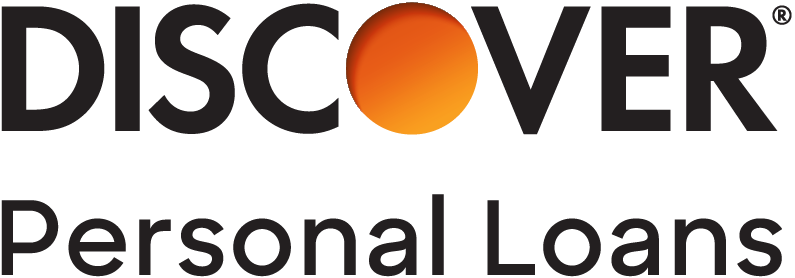Family Loans: How to Borrow From and Lend to Family

Many, or all, of the products featured on this page are from our advertising partners who compensate us when you take certain actions on our website or click to take an action on their website. However, this does not influence our evaluations. Our opinions are our own. Here is a list of our partners and here's how we make money.
Borrowing from family may seem like a low-cost option if you need money for a down payment on a home, to start a business or repay high-interest debts. It can also be a convenient way to get quick cash if you lose your job or encounter an emergency expense.
But mixing money and family is tricky.
Defaulting on a family loan could put your relationship with the lender at risk and add strain to your family member’s finances. Successfully loaning money to family requires clear communication and maybe even a written loan agreement. Family lenders must also consider IRS guidelines.
Here’s what to know about getting a personal loan from a family member, including the pros and cons, how to formalize a family loan and alternatives to consider.
Personal loans from our partners
What is a family loan?
A family loan is a loan between family members. You could create a similar loan arrangement between friends, significant others or roommates.
With this type of loan, it’s up to you and the lender to decide how it’s structured. A family loan can have interest or not and be repaid in installments or a lump sum. It can be unsecured, or you could provide collateral. The loan can be informal or formalized with a loan agreement.
Family loans can help you avoid expensive no-credit-check loans and don’t have many barriers to approval, but the potential downsides include tax implications and a bit of awkwardness.
Pros and cons of family loans
Pros
Easy approval: There's typically no formal application process, credit check or income verification when you're borrowing from family or friends. Traditional lenders often require documents such as W-2s, pay stubs and tax forms as part of the loan application.
Low costs: Since the loan is coming from a loved one instead of a for-profit corporation, you may get a loan at a much lower interest rate than what a bank, credit union or online lender might offer. Family members are also unlikely to charge late fees or the upfront origination fee that lenders sometimes charge.
Hardship options: Family members may be more lenient than other lenders if you encounter a hardship, like a job loss or illness, letting you pause or suspend payments for a period of time.
Helps avoid risky loans: Family loans can help you avoid payday and other high-interest lenders that charge unaffordable rates.
Cons
Potential for conflict: If the loan isn't repaid or the terms of the agreement are broken, it can strain a relationship. The family member or friend loaning the money must consider the chances of not getting it back and whether the loan will impact their own financial goals.
Tax implications: If the family loan is interest-free and over a certain amount ($17,000 in 2023 or $18,000 in 2024), the lender may need to file a gift tax return. If the loan includes interest, the lender must follow IRS interest rate guidelines and potentially report it as income.
No credit building: Payments toward a family loan aren't reported to the three major credit bureaus, eliminating the opportunity to improve the borrower’s credit. Good credit scores can help you qualify for credit in the future, like a mortgage or car loan.
A lending circle can be a credit-building alternative to family loans. Lending circles are groups of trusted friends, family members or neighbors who take turns raising money for one member’s expense.
How to make a family loan agreement
Use a family loan agreement to avoid issues that may arise during repayment. This is a contract that spells out the terms and conditions of the loan.
A notarized and signed agreement may seem impersonal, but having things in writing can prevent misunderstandings and frustrations. Be sure to include both parties in the decision-making process.
Here’s what to include in your family loan agreement:
The amount borrowed and how it will be used.
Repayment terms, including payment amounts, frequency and when the loan will be repaid in full.
The loan’s interest rate. The IRS sets an applicable federal rate each month, which is the minimum interest rate allowed for private loans over $10,000.
If the loan can be repaid early without penalty, and how much interest will be saved by early repayment.
What happens if the borrower stops paying, whether it’s temporarily due to an emergency, or entirely.
A tip to make things easier on the lender: Be clear about how much you need to borrow, what it’s for and the repayment plan when you approach them about borrowing. Give your family member time to process the request.
Lenders need to consider whether they can afford to offer a loan and the possibility of taking a loss if there are issues with repayment. Be open to any questions your family member may have about your ability to repay the loan.
Alternatives to family loans
When weighing the pros and cons of a family loan, also consider alternatives that may provide more cash and less risk to your relationships.
Personal loans: You can apply for a personal loan from a bank, credit union or online lender. With a personal loan, you get a lump sum of money and repay it in monthly installments over a period of two to seven years. Personal loans can be used for nearly any purpose, including consolidating debt or home improvements.
Personal loan rates range from 6% to 36%, with the lowest rates reserved for borrowers with good to excellent credit (a score of 690 or higher). Some lenders, like online lenders and credit unions, offer loans to borrowers with low credit scores. Bad-credit loans can have rates at the high end of a lender's APR range, but they're much more affordable than payday and other no-credit-check loans.
» MORE: See your bad-credit loan options
Co-signed personal loans: Some lenders allow you to add a family member or significant other as a co-signer to a loan application. Doing so can increase your chances of qualifying and put less pressure on your loved one, since they’re not providing the cash.
However, there’s still a risk of damaging your relationship. Failure to repay a co-signed loan can hurt both of your credit scores. A co-signer must repay the loan if the borrower can’t.
Cash advance apps: Cash advance apps let you borrow up to a few hundred dollars and repay the money on your next payday. These apps don’t charge interest, but they may charge subscription fees and fast funding fees — and they often ask for an optional tip. If you use an app, make a plan to pay the advance back on time.
Buy now, pay later: A “buy now, pay later” loan is an at-checkout financing option that splits the bill from one shopping trip into multiple (usually four) smaller payments. These payment plans are available at major retailers and are best for large purchases like a new mattress or laptop. Use one payment plan at a time to avoid overspending or losing track of payment due dates.
Gifting: If both parties agree that a loan doesn't need to be repaid, it’s considered a gift. This may be a choice when there's concern that a loan might put the relationship at risk, and if the family member can afford to give the money away without being repaid.

on NerdWallet




